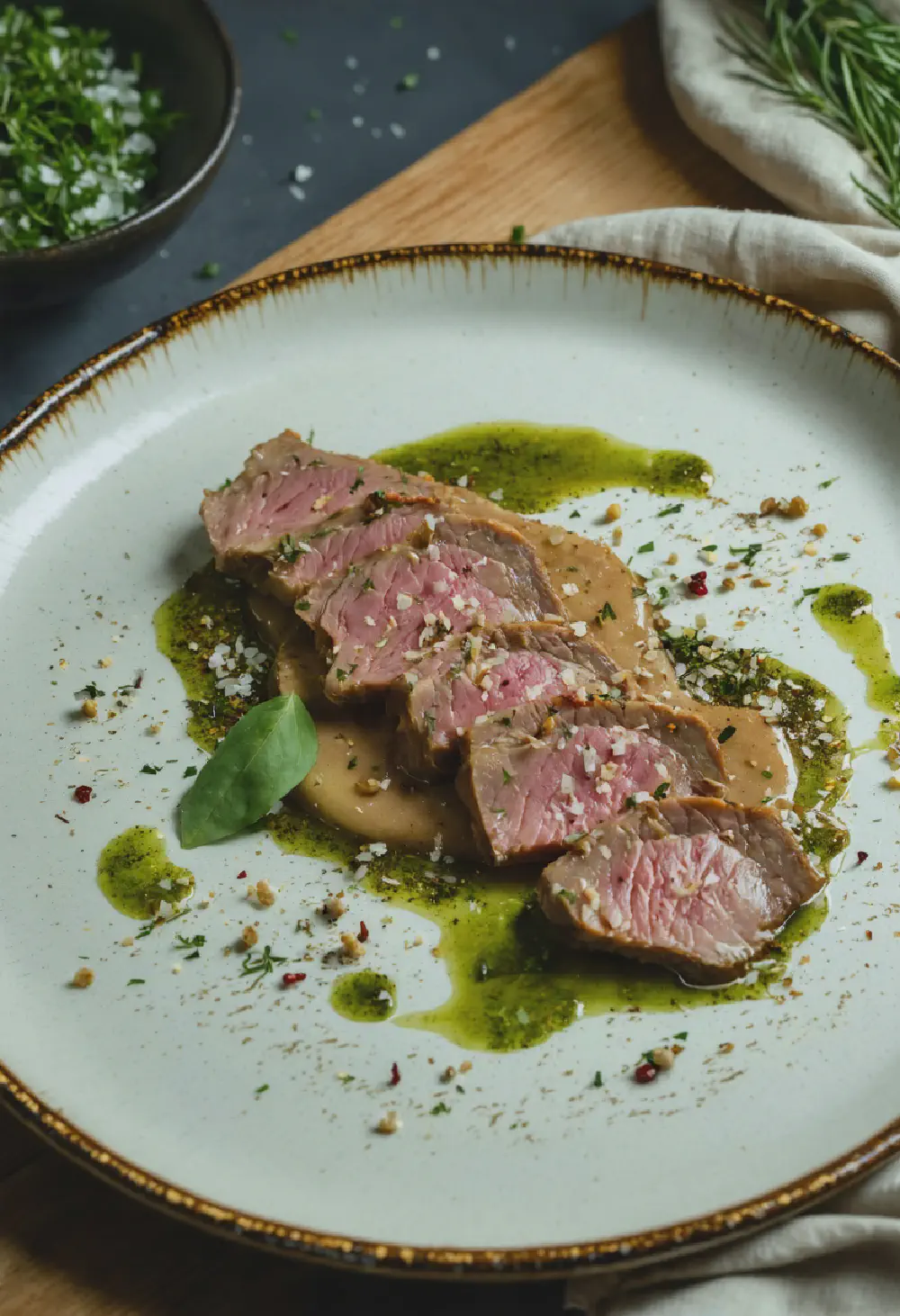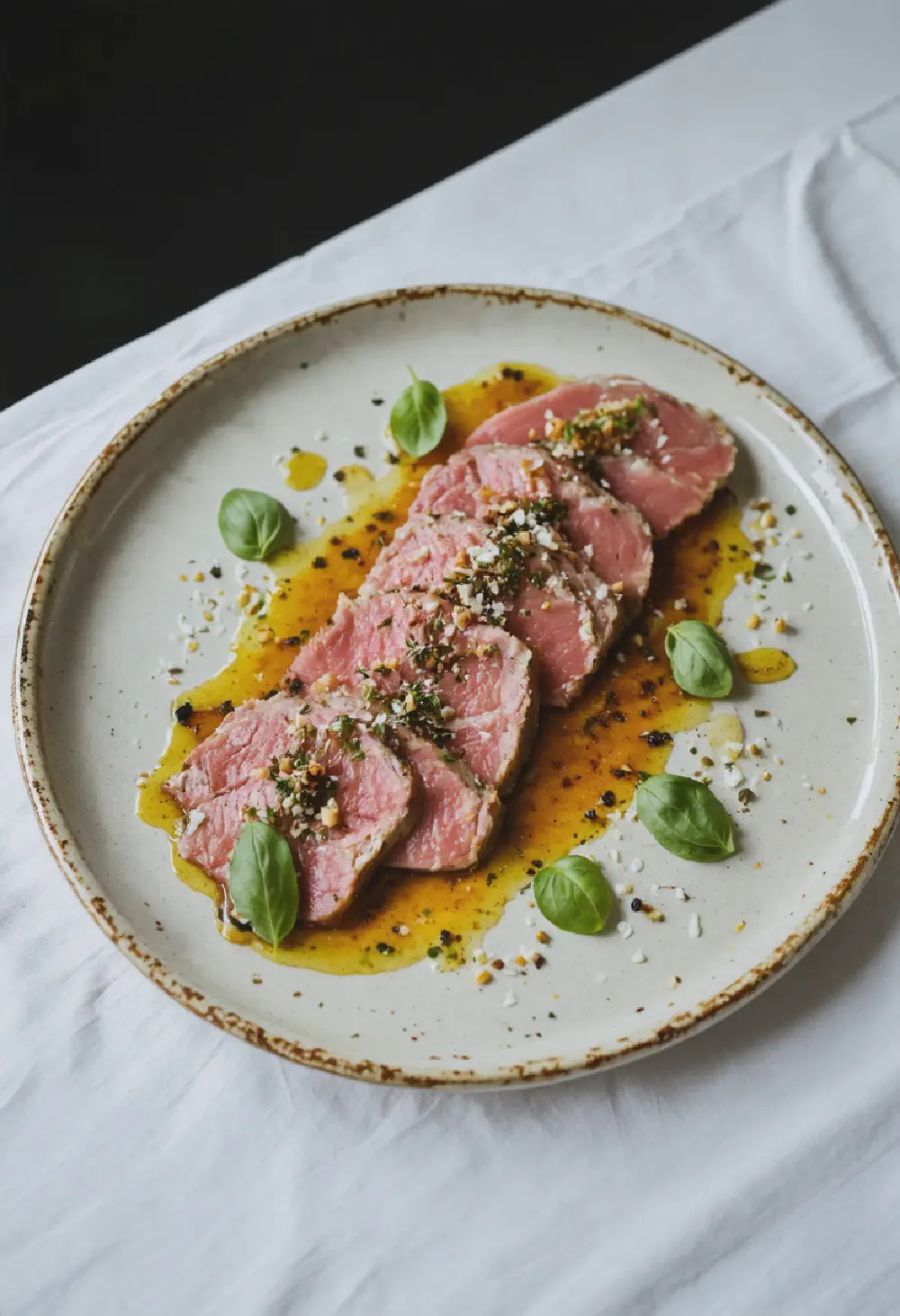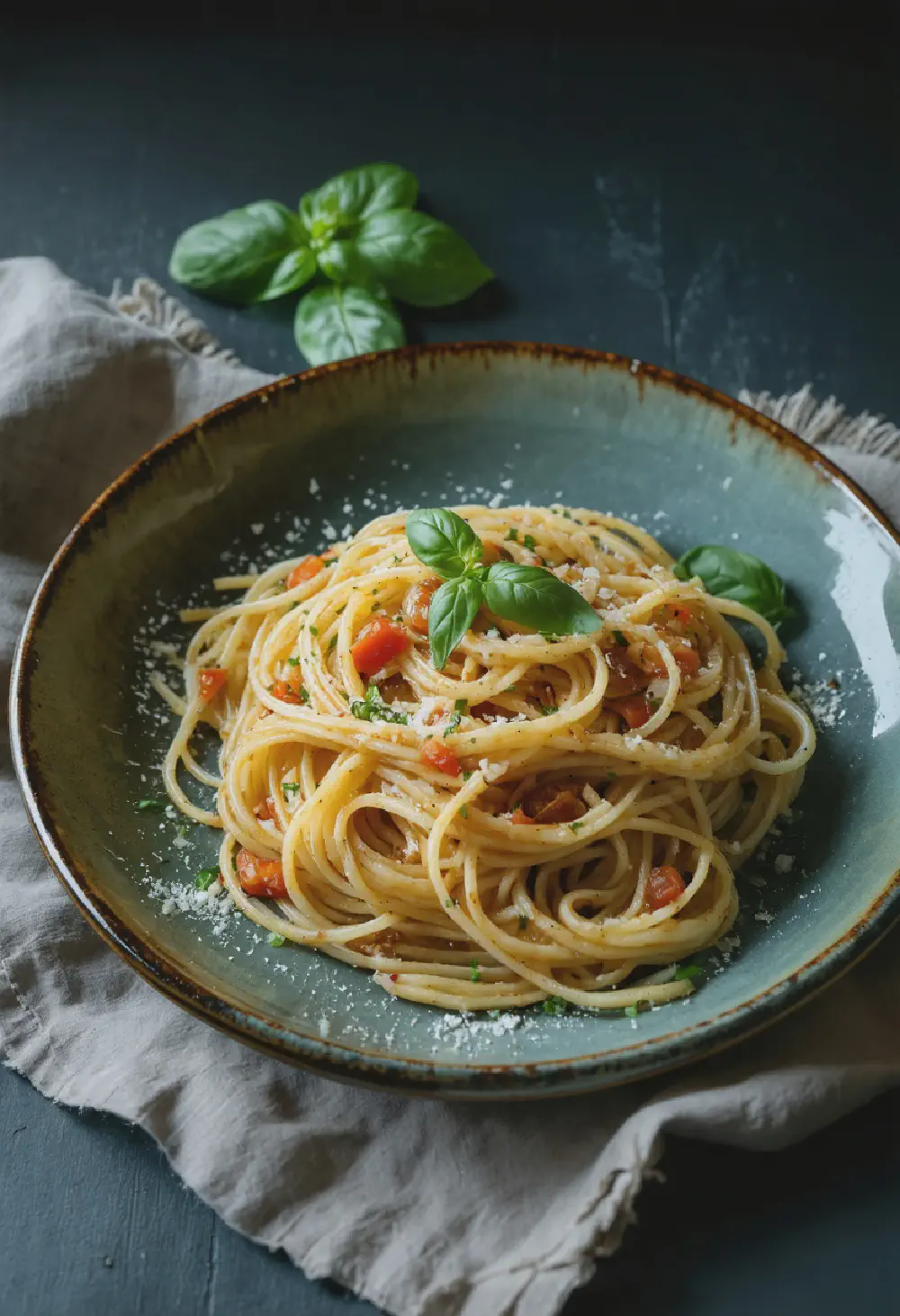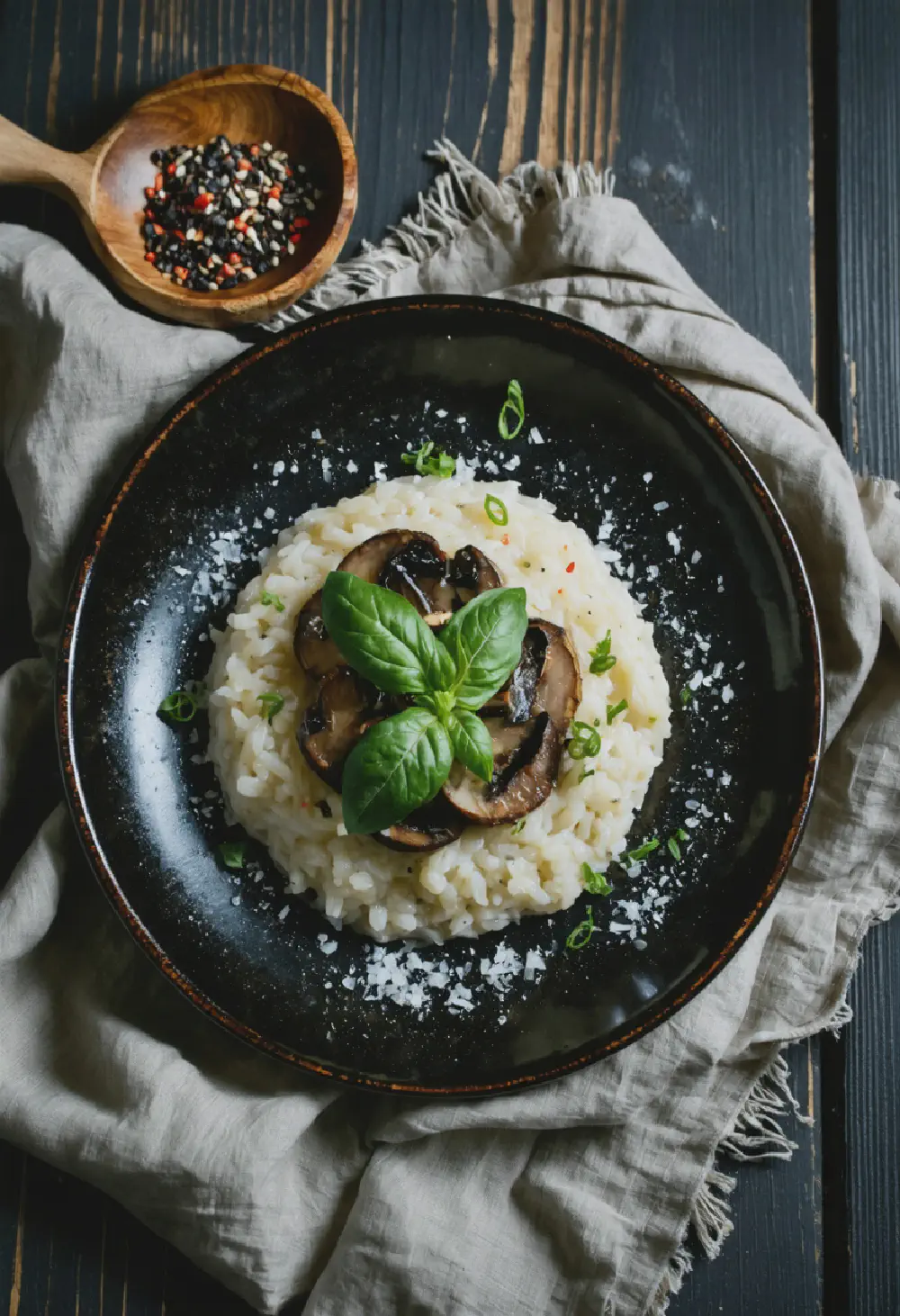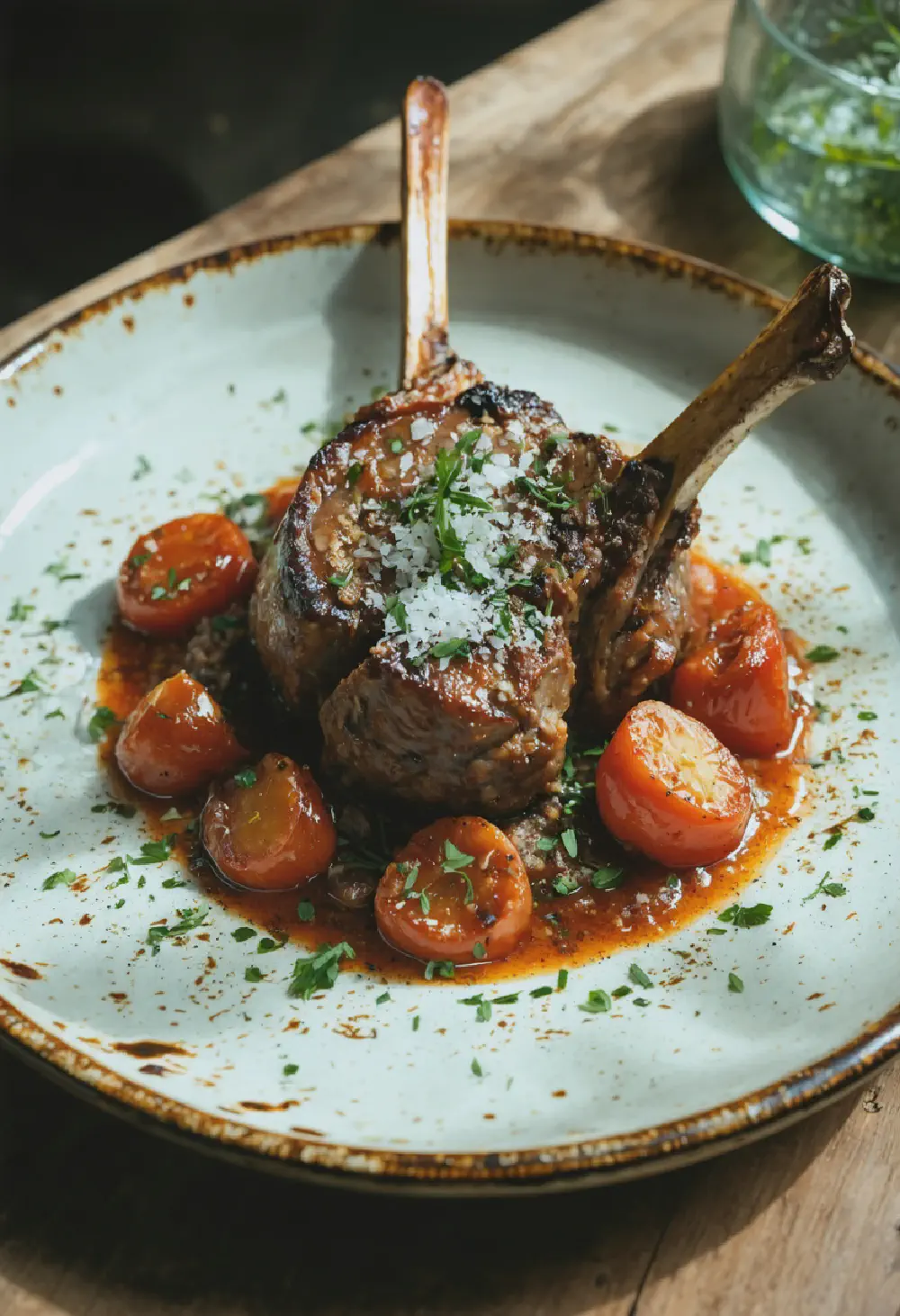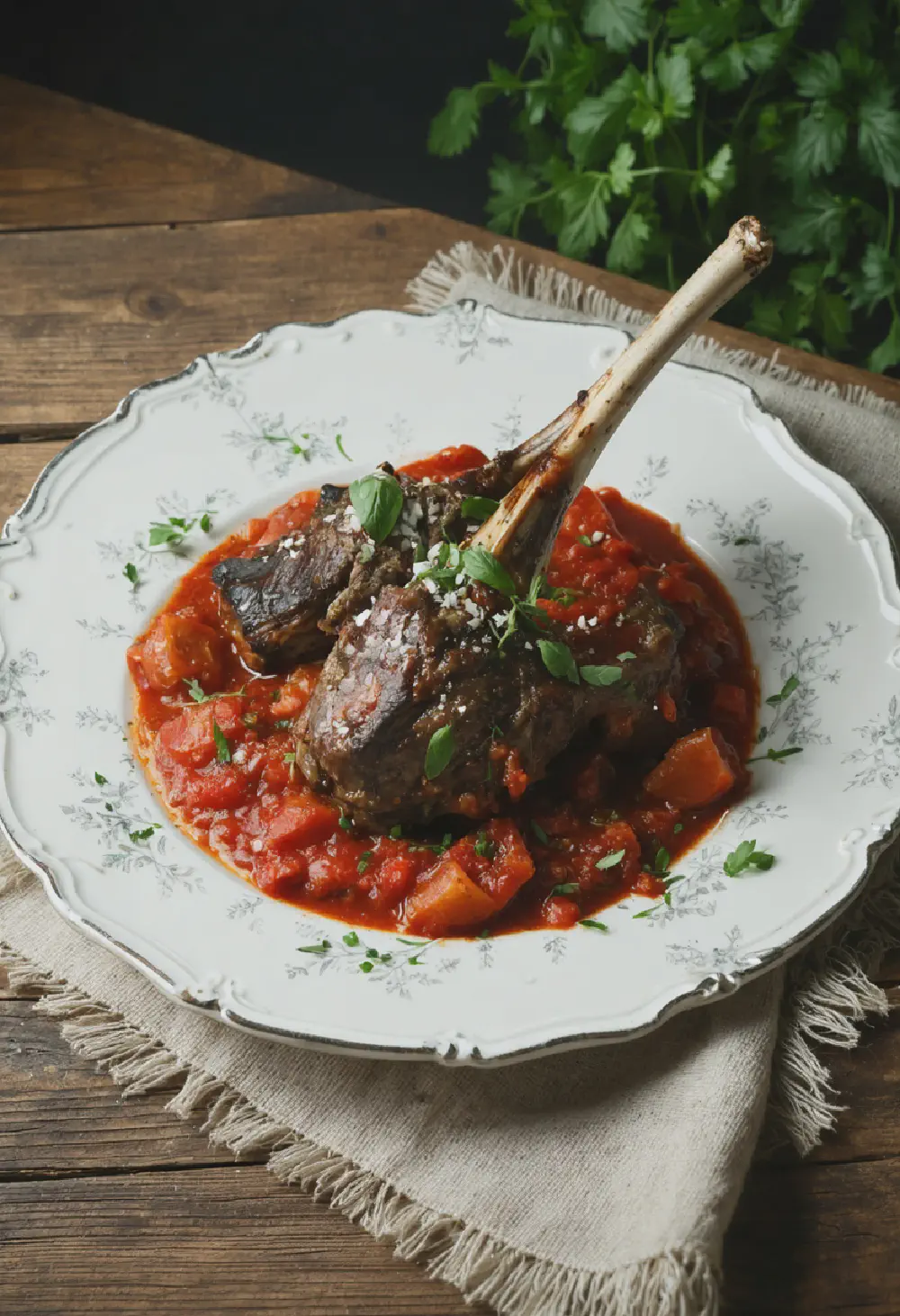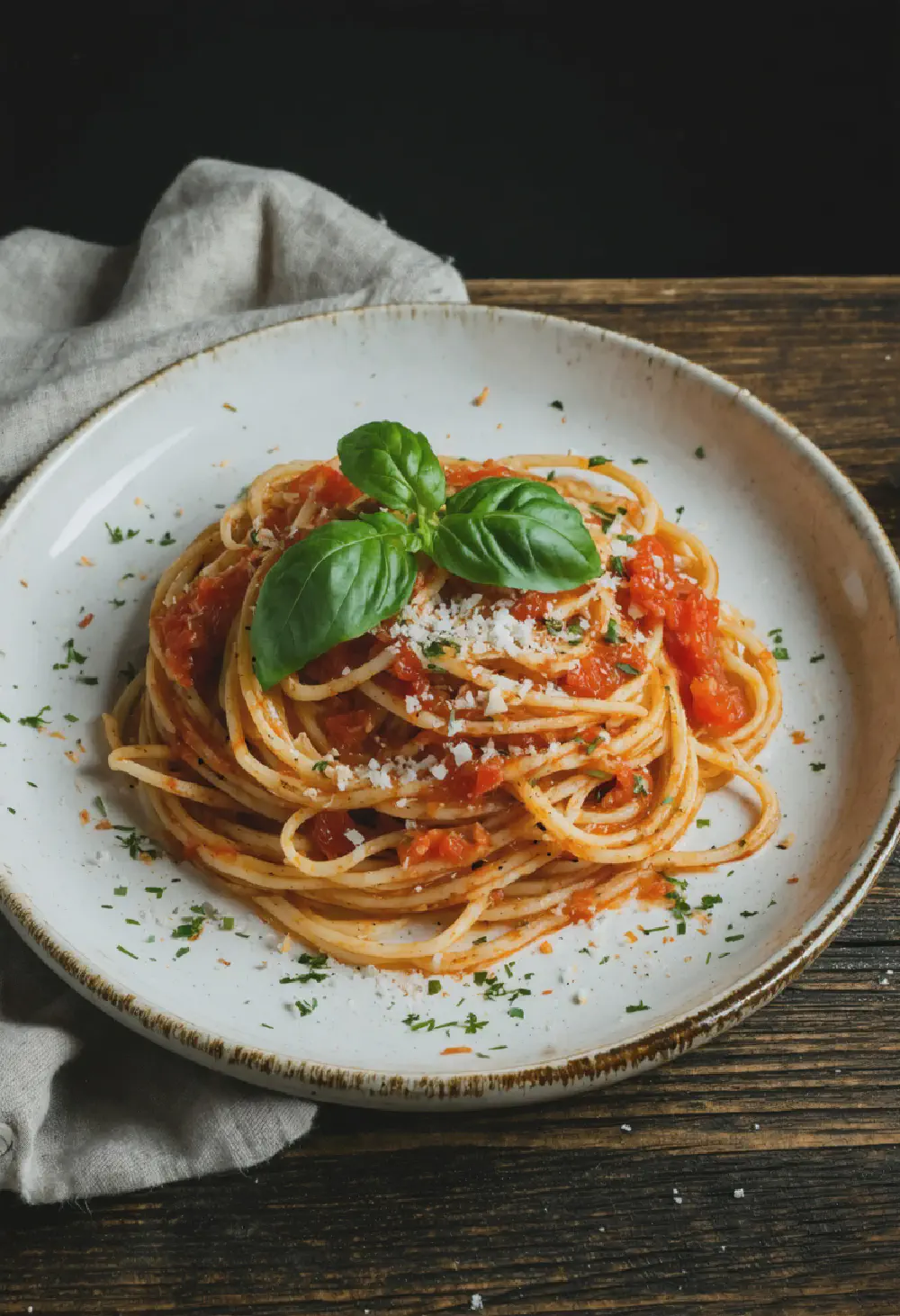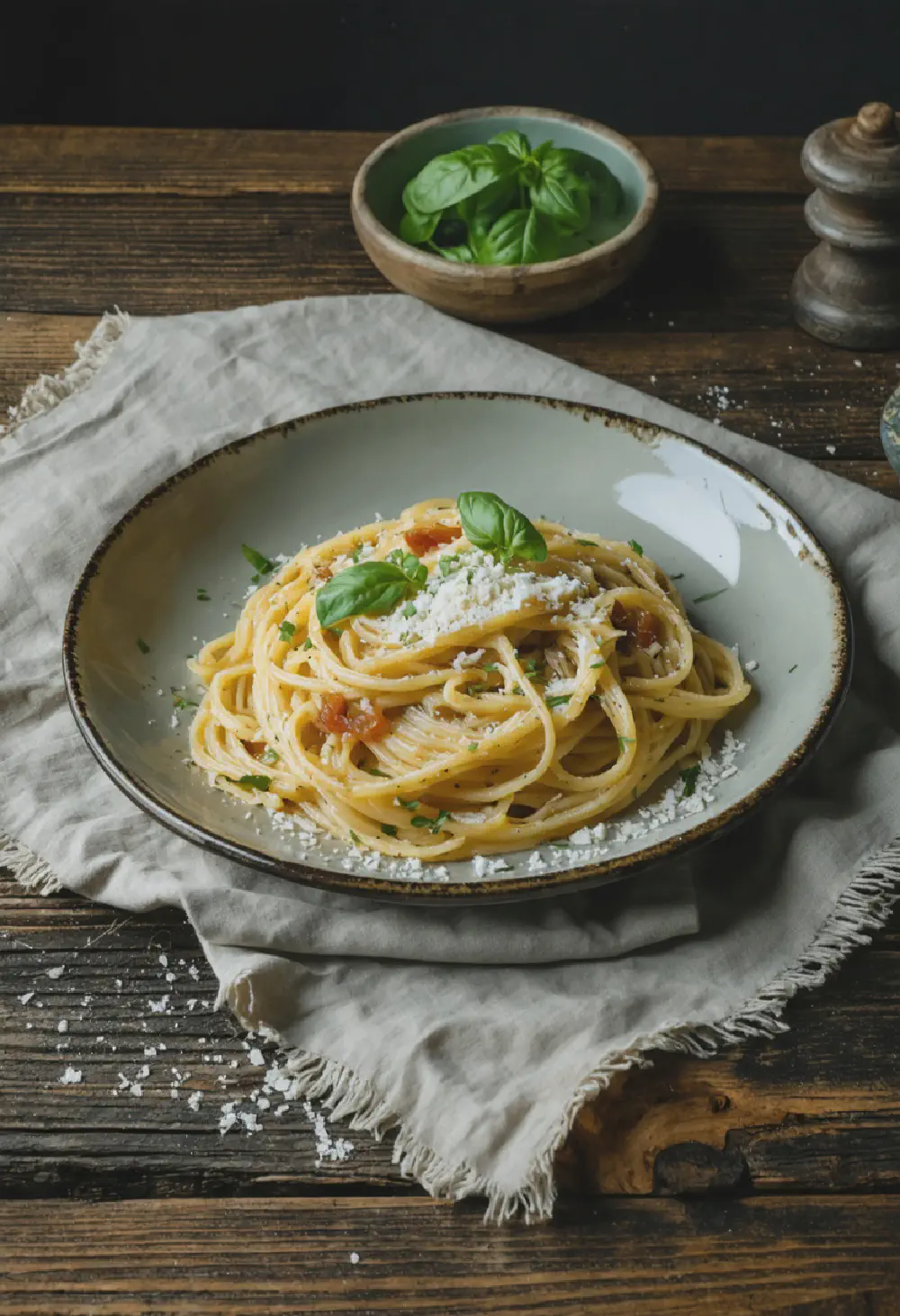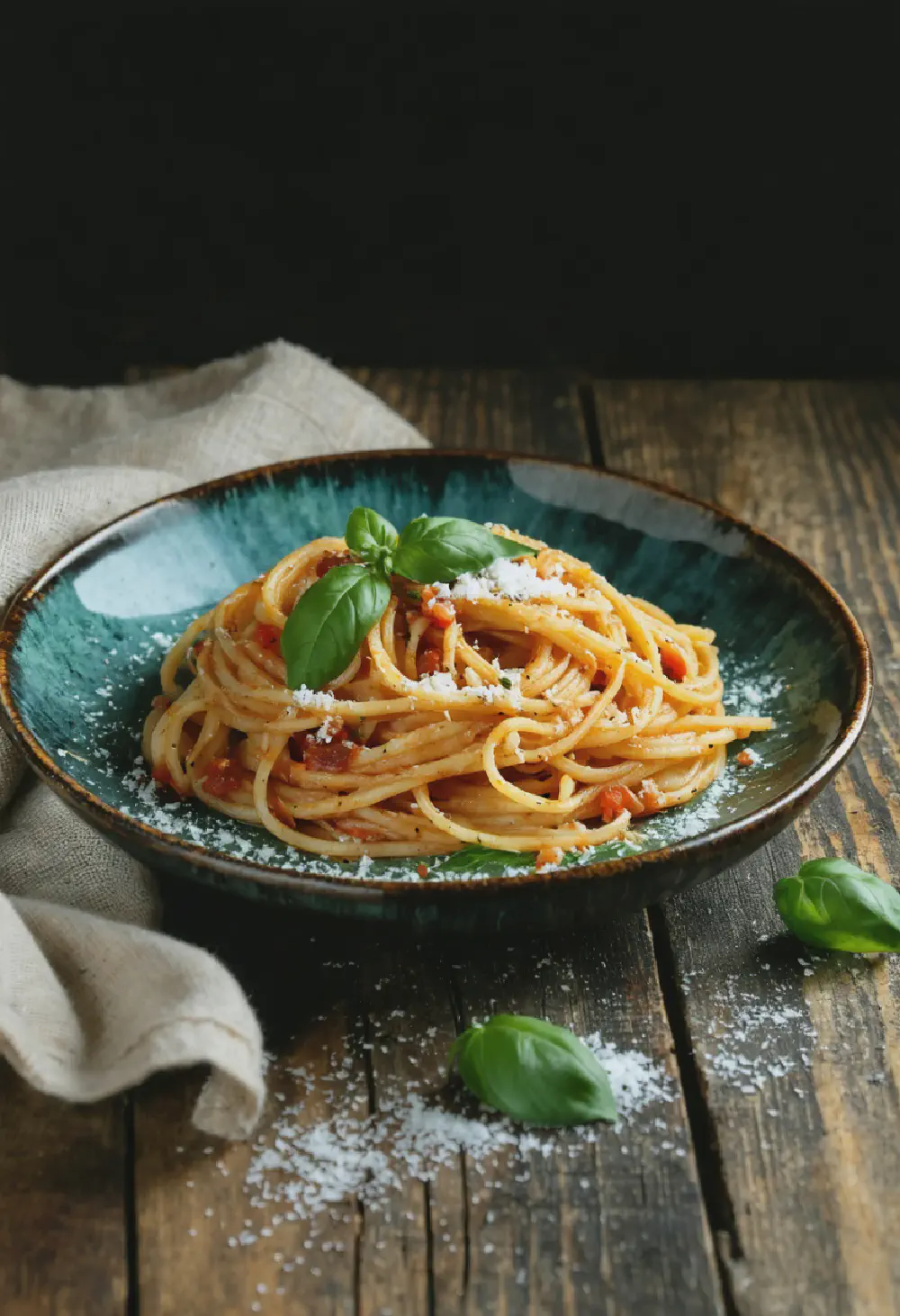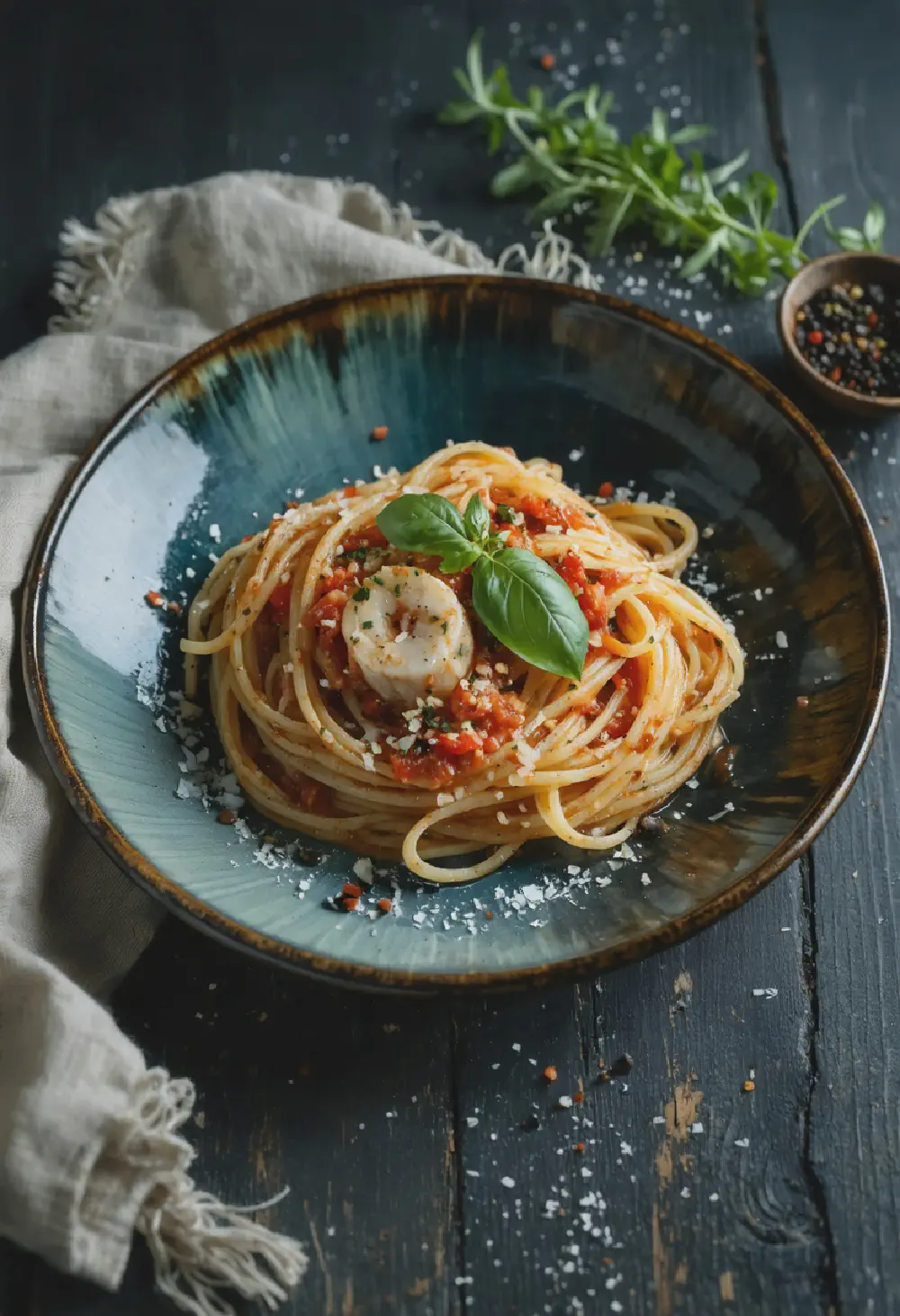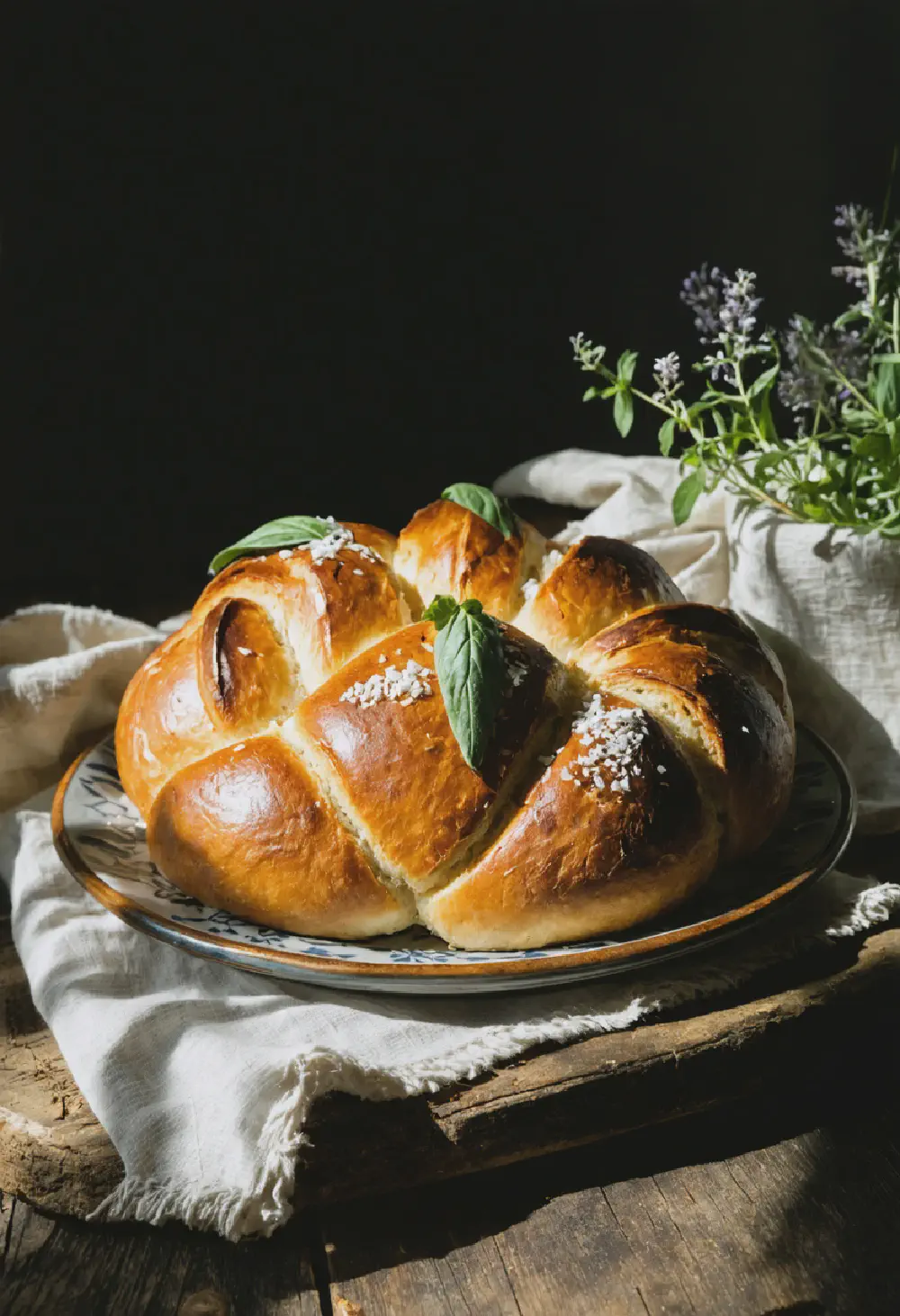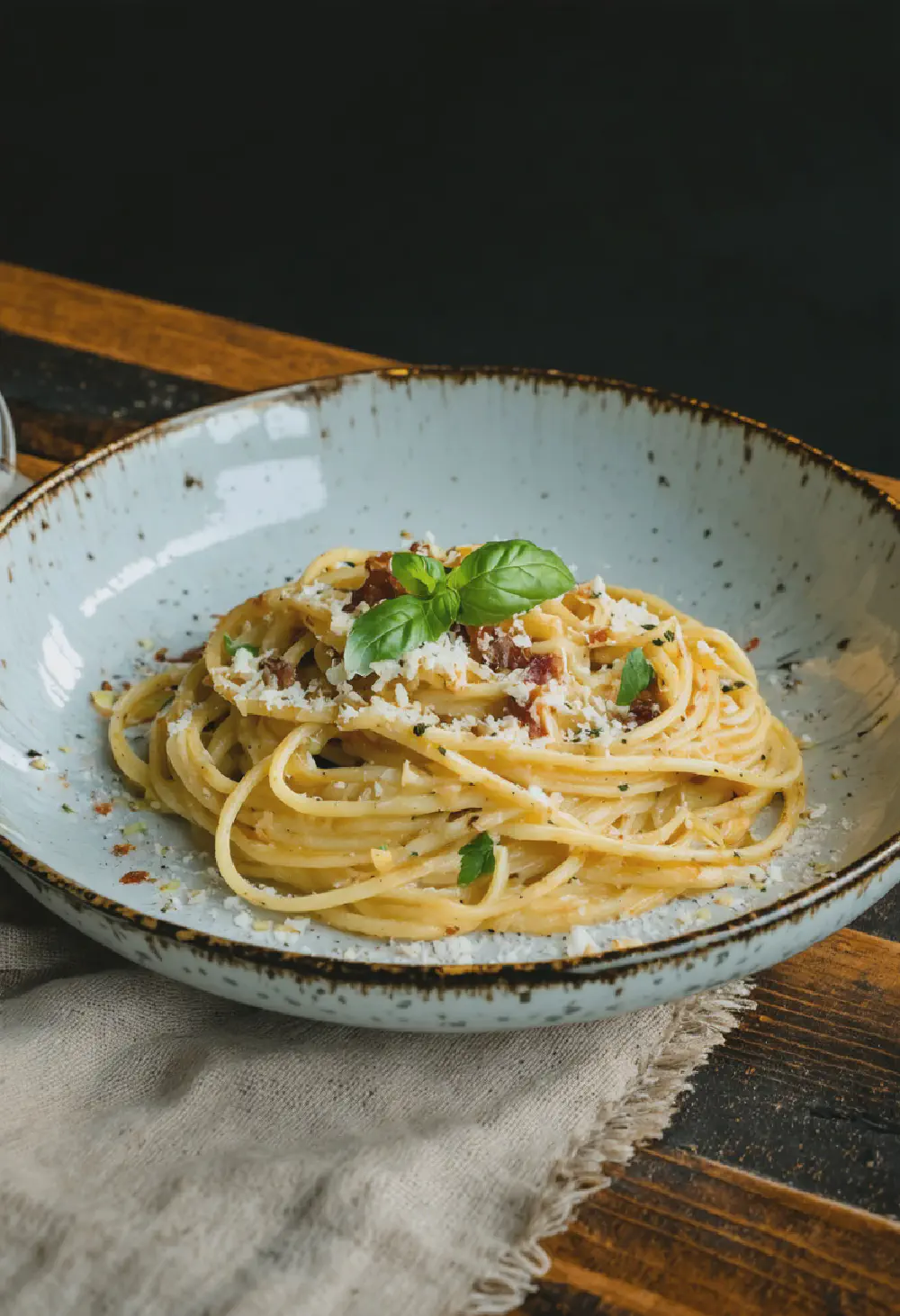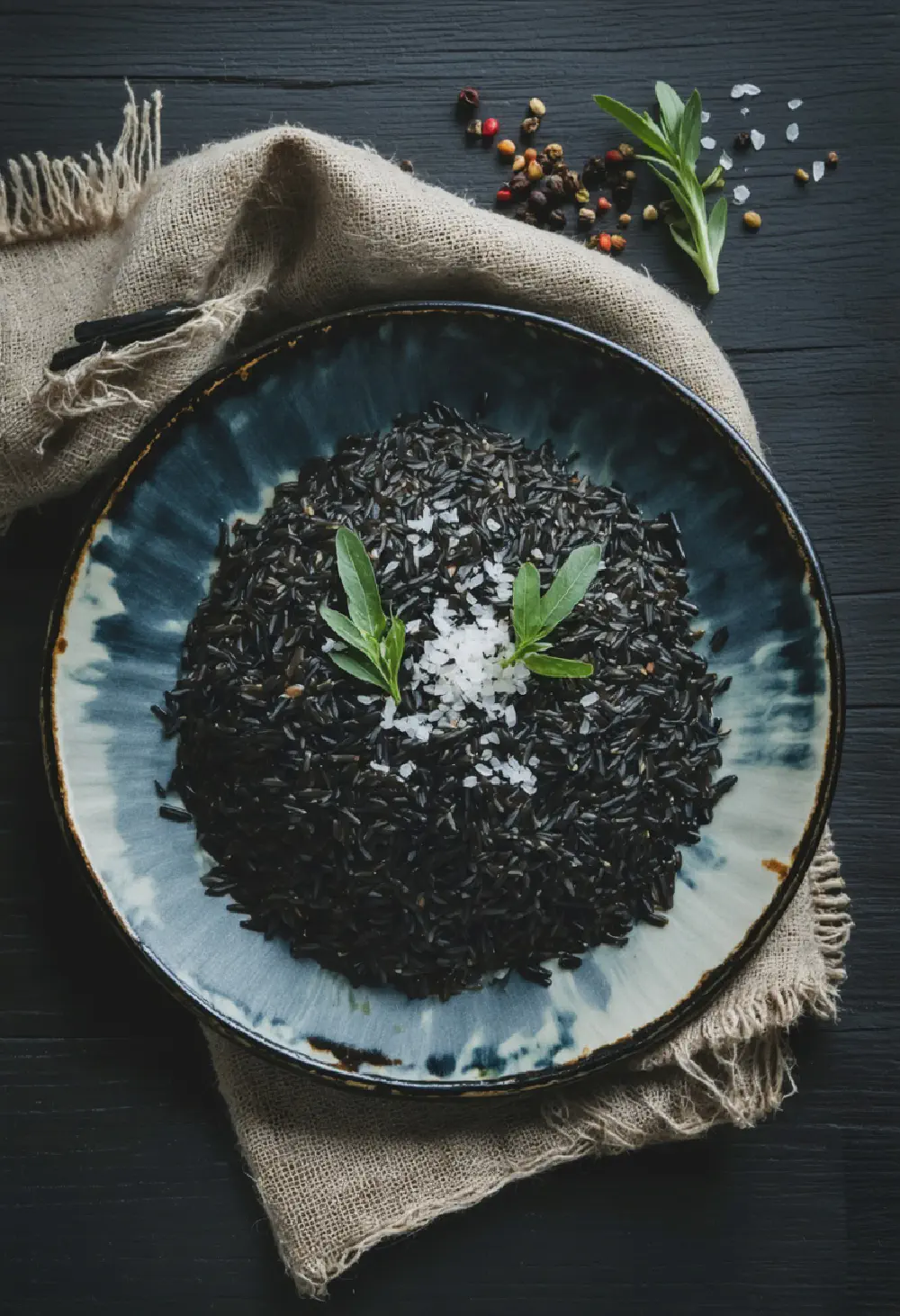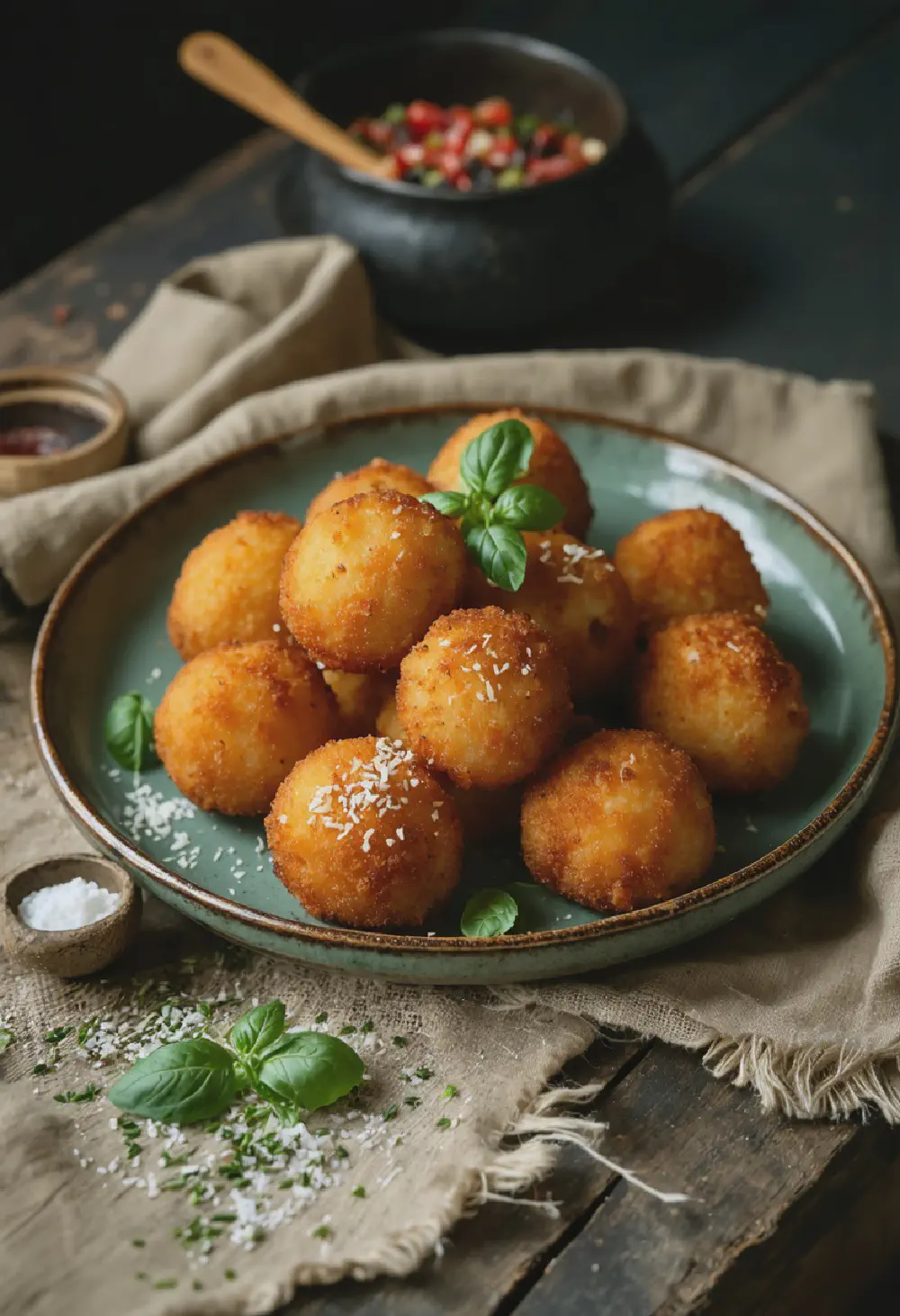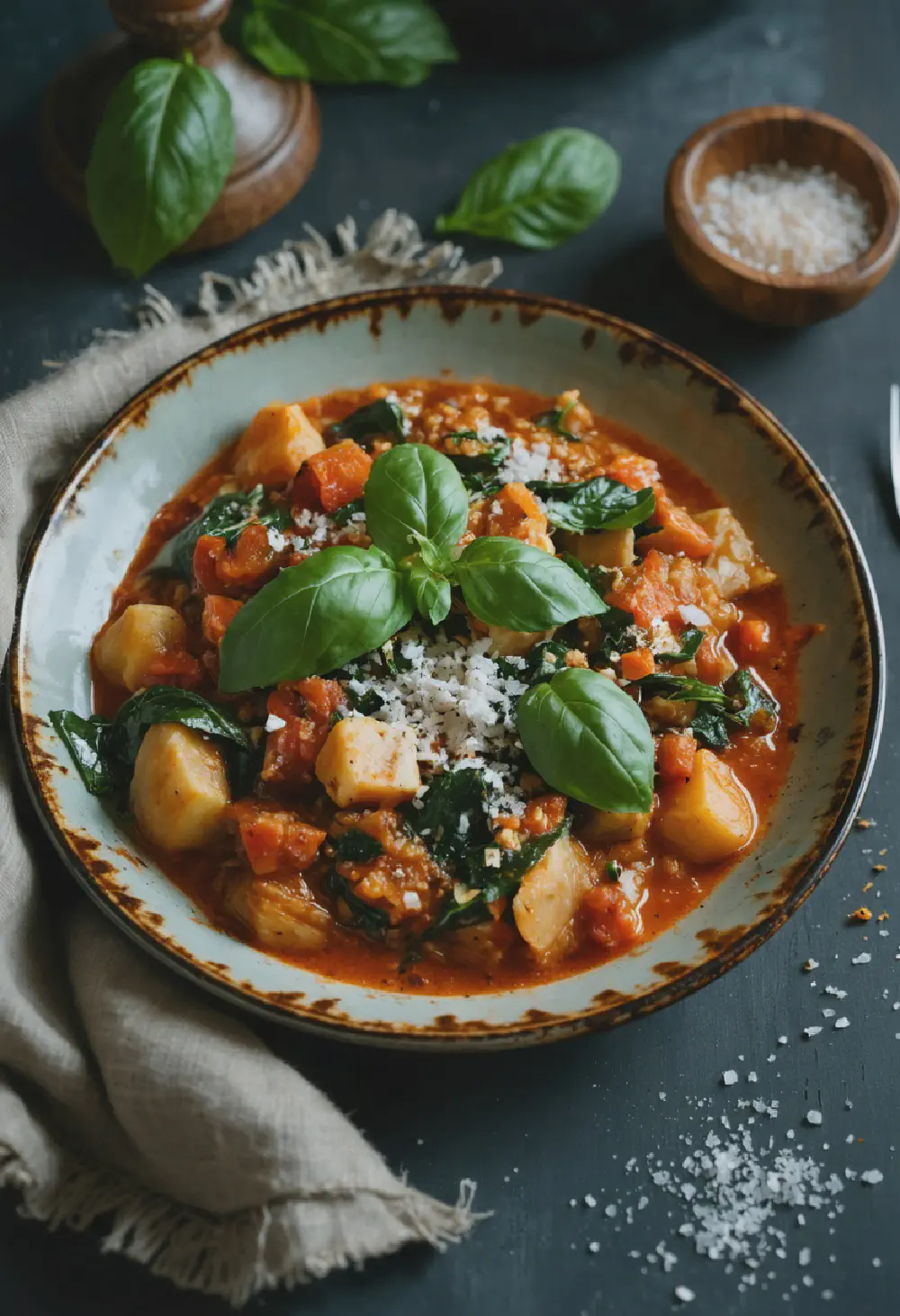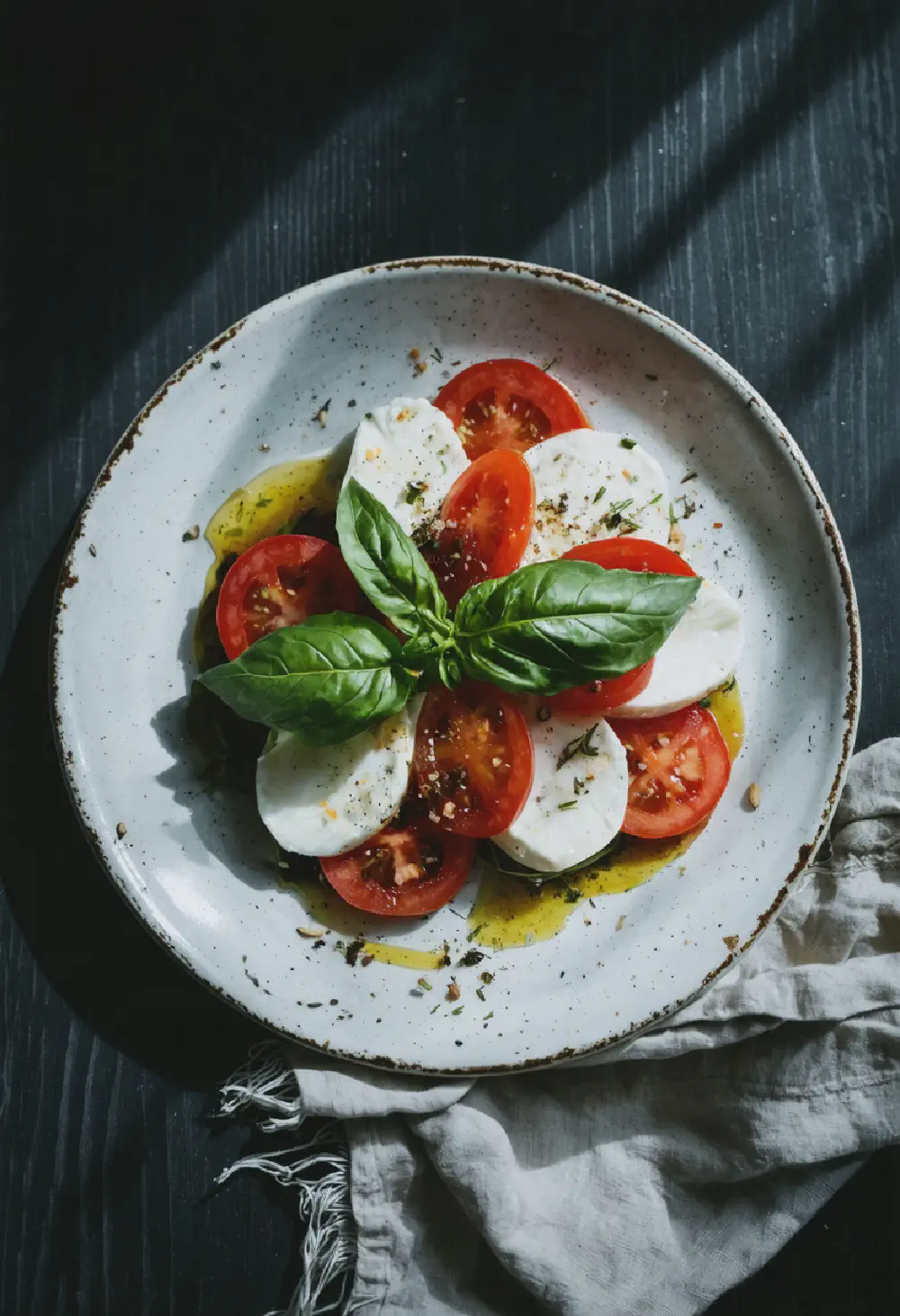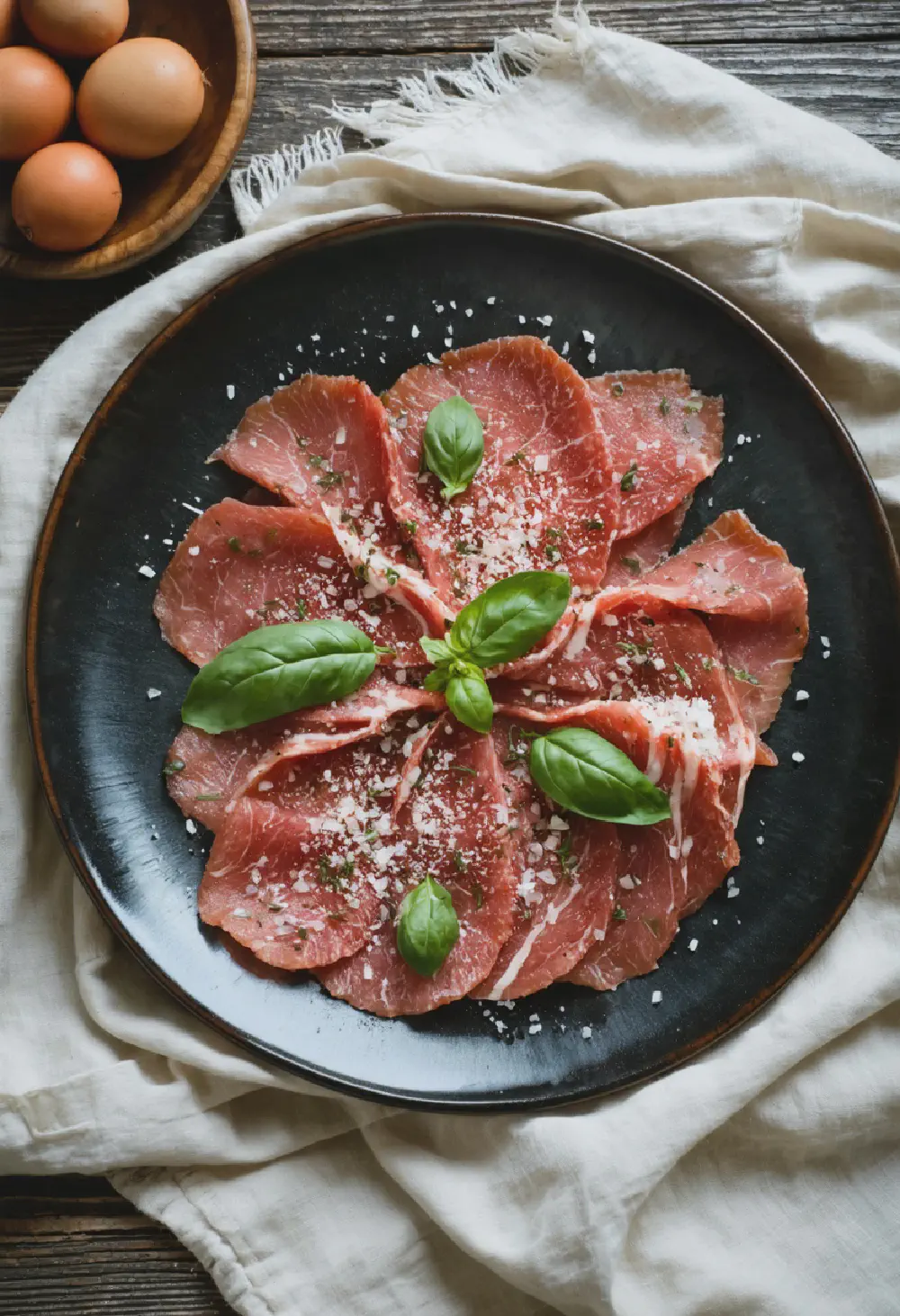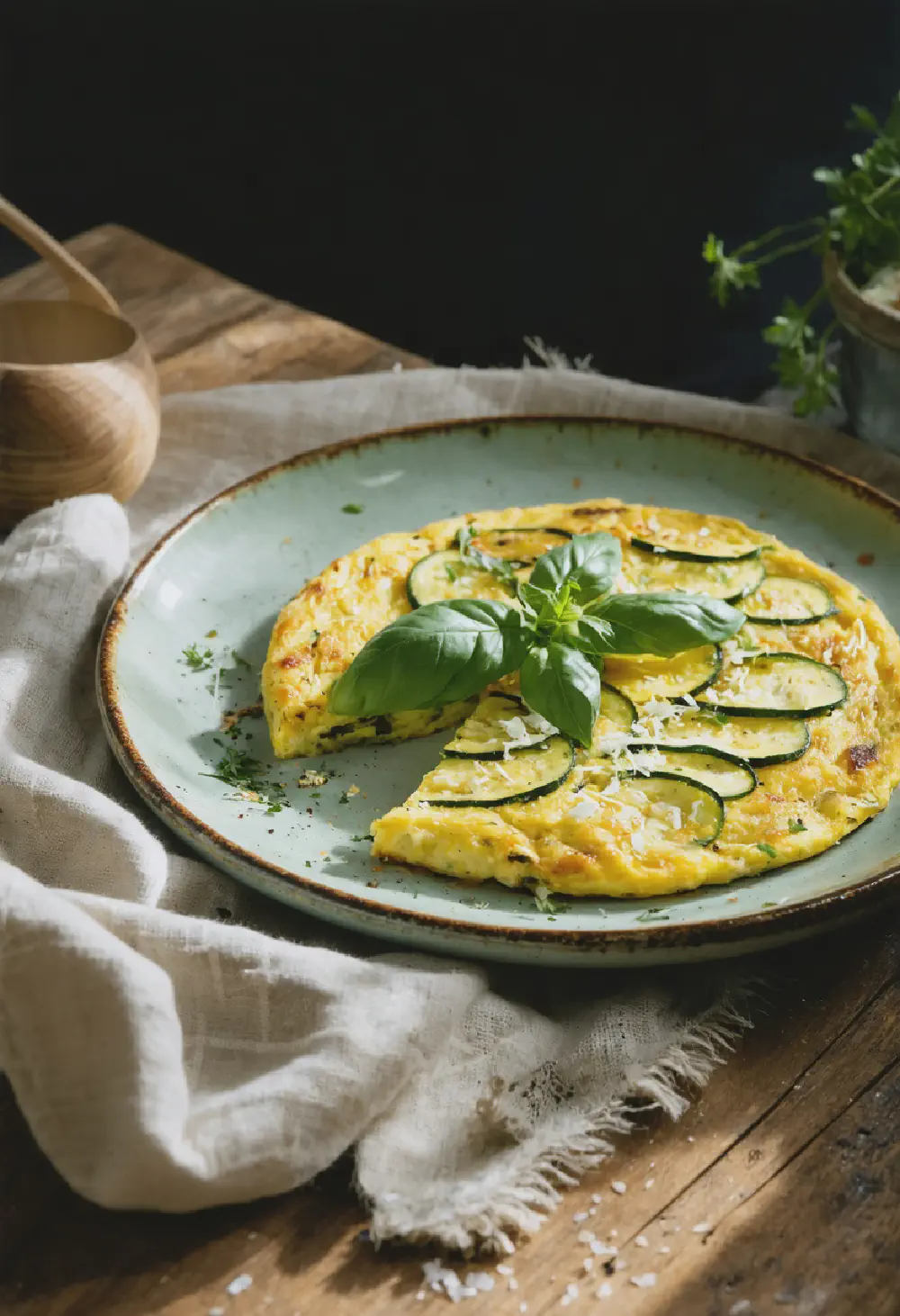Vitello Tonnato
30M
2H
- Makes 4 servings
- 1 pound veal roast
- 1 onion, chopped
- 1 carrot, chopped
- 1 celery stalk, chopped
- 2 cloves garlic, minced
- 1 cup dry white wine
- 2 cups chicken broth
- Salt and pepper to taste
- 1 can (5 ounces) tuna in olive oil, drained
- 2 tablespoons capers, plus extra for garnish
- 1/2 cup mayonnaise
- 2 anchovy fillets
- 1 tablespoon lemon juice
- 2 tablespoons olive oil
- Fresh parsley, chopped, for garnish
- Preheat your oven to 325°F (160°C). Season the veal roast generously with salt and pepper.
- In a large ovenproof pot, heat the olive oil over medium heat. Add the veal and brown on all sides, about 8 minutes total. Remove the veal and set aside.
- In the same pot, add the onion, carrot, celery, and garlic. Sauté until the vegetables are softened, about 5 minutes.
- Pour in the white wine, scraping up any browned bits from the bottom of the pot. Let it simmer for 2 minutes.
- Return the veal to the pot, add the chicken broth, and bring to a simmer. Cover the pot and transfer it to the oven.
- Cook the veal in the oven for about 1.5 hours, or until it is tender and reaches an internal temperature of 145°F (63°C).
- Remove the veal from the pot and let it cool. Strain the cooking liquid and reserve it for the sauce.
- While the veal cools, prepare the tuna sauce. In a blender or food processor, combine the tuna, capers, mayonnaise, anchovy fillets, lemon juice, and 1/4 cup of the reserved cooking liquid. Blend until smooth. If the sauce is too thick, add more cooking liquid until you reach the desired consistency.
- Once the veal has cooled, slice it thinly and arrange the slices on a serving platter.
- Spoon the tuna sauce over the veal slices, ensuring they are well coated. Garnish with additional capers and chopped parsley.
- Chill the Vitello Tonnato in the refrigerator for at least 1 hour before serving to allow the flavors to meld.
- Serve chilled, and enjoy your authentic Italian Vitello Tonnato!
Vitello Tonnato: A Classic Italian Delight
History
Vitello Tonnato, a beloved dish in Italian cuisine, has a rich history that traces back to the Piedmont region of Italy. This dish, which translates to “veal with tuna sauce,” is believed to have originated in the 19th century. It was initially a way to use leftover veal, transforming it into a gourmet meal with the addition of a unique tuna-based sauce. Over the years, Vitello Tonnato has evolved from a simple home dish to a staple in Italian restaurants, appreciated for its elegant presentation and exquisite flavors. The dish’s popularity has spread beyond Italy, making it a favorite among food enthusiasts worldwide who appreciate the fusion of land and sea in one delectable plate.
Taste Profile
The taste profile of Vitello Tonnato is a harmonious blend of delicate and bold flavors. The tender slices of veal provide a mild, succulent base that perfectly complements the rich and creamy tuna sauce. The sauce, made from tuna, anchovies, capers, and mayonnaise, adds a savory and slightly tangy note to the dish. The addition of lemon juice and olive oil enhances the sauce’s smoothness, while a hint of garlic and sometimes a dash of vinegar bring a subtle sharpness that balances the overall flavor. This combination results in a sophisticated taste experience that is both comforting and luxurious, making Vitello Tonnato a standout dish in Italian cuisine.
Cultural Significance
In the realm of Italian cuisine, Vitello Tonnato holds a special place due to its cultural significance. It is often served as an antipasto during festive occasions and family gatherings, symbolizing the warmth and generosity of Italian hospitality. The dish’s ability to marry the flavors of the land and sea reflects the innovative spirit of Italian cooking, where traditional ingredients are used in unexpected ways to create something extraordinary. Vitello Tonnato is also a testament to the Italian philosophy of using simple, high-quality ingredients to achieve complex and delightful flavors. Its presence on menus across Italy and beyond underscores its enduring appeal and the pride Italians take in their culinary heritage.
